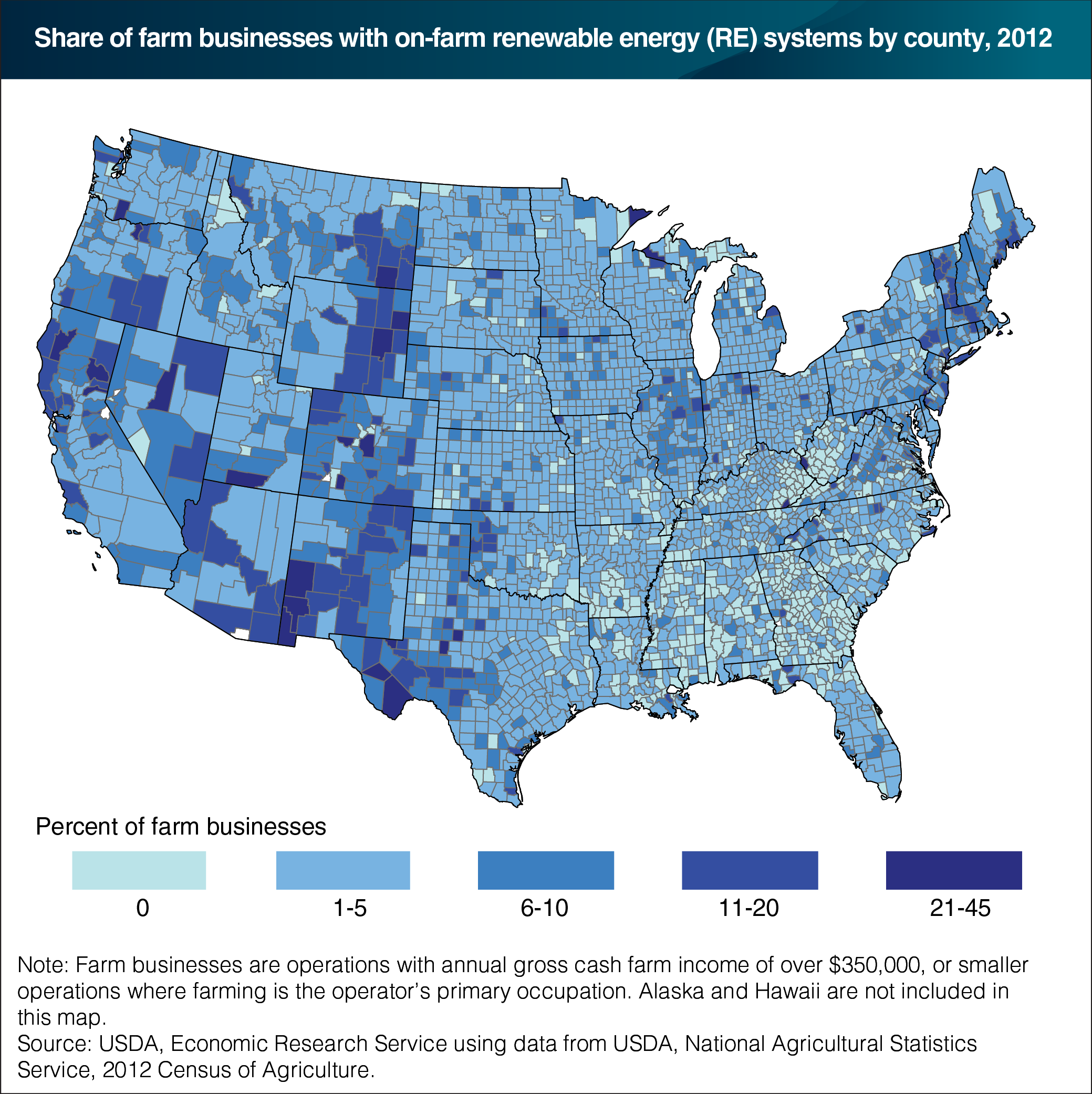On-farm renewable energy production varies regionally
- by Claudia Hitaj
- 10/28/2016

Since the early 2000s, farms have increased renewable energy production with technologies like solar panels, wind turbines, and methane digesters. From 2007 to 2012, the number of farms generating on-farm renewable energy more than doubled to nearly 58,000—or 2.7 percent of U.S. farms. This does not include the roughly 16,600 farms that leased wind rights to others or that produced ethanol and biodiesel on the farm. Adoption of on-farm renewable energy systems varies across the country but it is concentrated in the Western United States, Illinois, and New England. In these regions, about two in five farm businesses produce renewable energy in some counties. The Southeastern States, which have fewer subsidies and programs supporting renewable power, had low adoption rates. This chart appears in the August 2016 ERS report Trends in U.S. Agriculture’s Consumption and Production of Energy: Renewable Power, Shale Energy, and Cellulosic Biomass.

